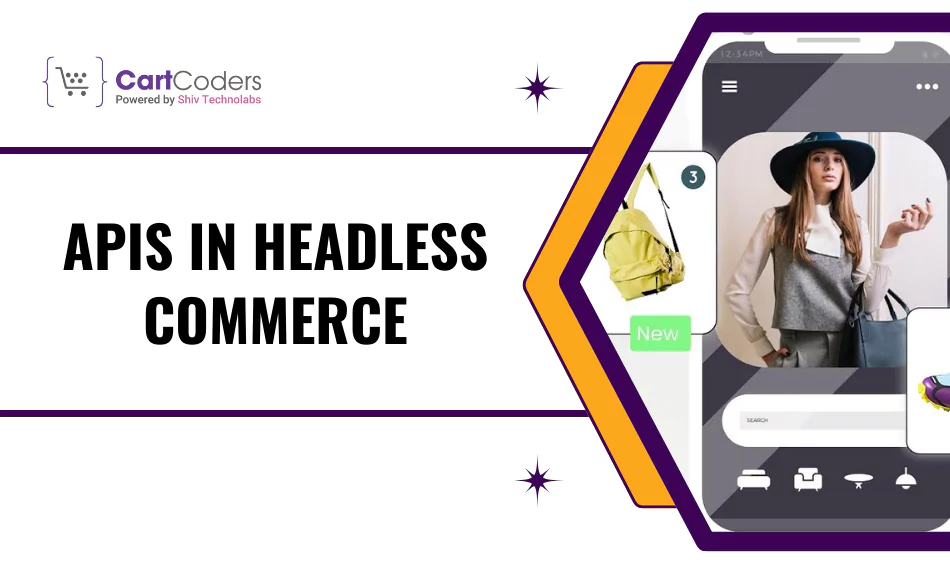Custom Engagement Solutions
Unlock tailored solutions with a free, no-obligation strategy session.
Expert Developers & Engineers on Demand
Scale Your Team with Skilled IT Professionals
Expert Guidance for Digital Transformation

Headless commerce has become one of the most talked-about approaches in modern eCommerce development. Instead of keeping the front-end and back-end locked together, it allows them to work independently while still communicating smoothly. At the center of this setup are APIs (Application Programming Interfaces), which act as the bridge between the two sides.
APIs let businesses connect their store with different systems—whether it’s product catalogs, checkout processes, payment gateways, or third-party tools. This makes it possible to deliver fast and consistent experiences across websites, apps, kiosks, or even smart devices. Without APIs, headless commerce would not be possible.
This blog looks at how APIs shape headless commerce, the benefits they bring, and the best practices businesses can follow to build flexible and future-ready stores.
Headless commerce is a modern way of building online stores where the front-end (what customers see) and the back-end (where data, orders, and logic live) are separated. This gives businesses the ability to design unique shopping experiences without being limited by the platform’s default structure.
In a traditional setup, both layers are tightly connected. Any change on the front-end often requires updates in the back-end. With headless commerce, APIs take over the role of communication, letting each side evolve independently while still staying connected.
This separation allows brands to create custom designs, adopt new technologies quickly, and expand into multiple channels without rebuilding the entire system.

APIs form the backbone of headless commerce. They handle the communication between the presentation layer and the core systems. Instead of relying on a single built-in framework, APIs allow businesses to connect services like product data, checkout flows, and payment processing to the front-end of their choice.
By working as messengers, APIs make sure that customer actions on the front-end—such as adding products to a cart or checking delivery options—are instantly reflected in the back-end. This not only supports faster development but also helps maintain consistent shopping experiences across multiple touchpoints.
Building an online store with APIs at its core provides several advantages that traditional setups can’t match. From flexibility to multi-channel readiness, APIs give brands the ability to scale faster and deliver experiences customers expect.
Since APIs separate the design from the logic, front-end updates can be made without disturbing the back-end. This makes it easier to launch new designs, test user flows, or run seasonal campaigns.
Businesses can create unique customer experiences by choosing front-end frameworks like React, Vue, or Angular. APIs provide the data, and developers focus on how it looks and works for users.
APIs allow stores to extend beyond a website. The same backend can power apps, kiosks, smart devices, or even voice-based shopping. This makes expansion smoother and cost-effective.
Whether it’s ERP, CRM, or marketing automation tools, APIs connect different systems without needing heavy custom development. This results in stronger workflows and better data flow.
APIs are not just a technical layer—they play a direct role in shaping customer experience and business operations. Here are some practical ways they support headless commerce.
APIs connect a single backend with multiple channels—such as websites, mobile apps, social platforms, or in-store kiosks. This helps brands deliver consistent product information and pricing across every channel.
From payment gateways like Stripe or PayPal to shipping partners such as FedEx or UPS, APIs allow stores to add new services without rebuilding core systems.
By linking customer profiles and behavior data, APIs enable stores to offer tailored recommendations, personalized promotions, and custom product bundles.
APIs make it easier to add multi-language and multi-currency features. They also connect with local tax rules and compliance systems, helping brands expand across regions without starting from scratch.

At CartCoders, we have worked with brands that struggled with rigid eCommerce setups. Many came to us wanting more control over design, faster performance, and the ability to connect their stores with third-party systems. APIs became the answer in each case.
Here’s how we support businesses through API-driven headless commerce:
Our focus is always on building flexible, future-ready stores where APIs are the backbone. This allows businesses to deliver unique experiences while staying ready for rapid growth.
APIs are the foundation of headless commerce. They connect the front-end and back-end, allowing each to function independently while still working together. This setup gives businesses flexibility, faster updates, and the ability to serve customers across multiple channels.
While challenges like complexity and security exist, following best practices can keep API-driven commerce reliable and scalable. For businesses aiming to create tailored shopping experiences and stay ready for future growth, APIs are no longer optional—they are essential.
CartCoders helps brands build API-first headless stores that deliver speed, adaptability, and long-term value. With the right strategy and expertise, your store can move beyond traditional limits and grow with confidence.
Contact CartCoders today!
Projects delivered in 15+ industries.
95% retention rate, building lasting partnerships.
Serving clients across 25+ countries.
60+ pros | 10+ years of experience.